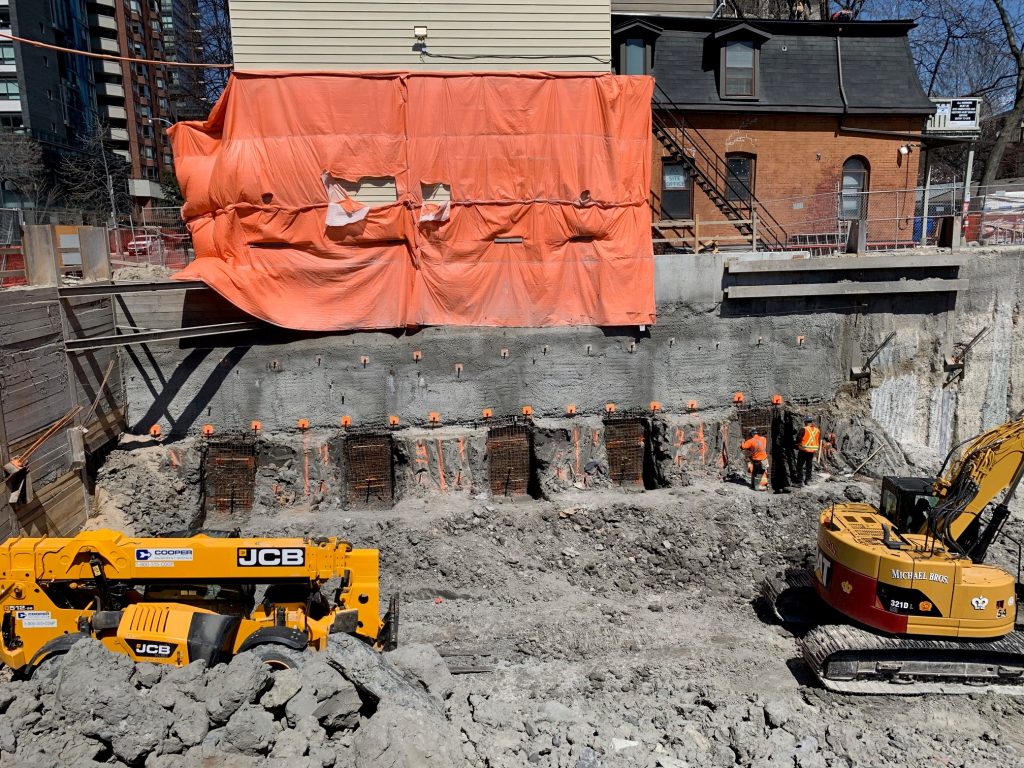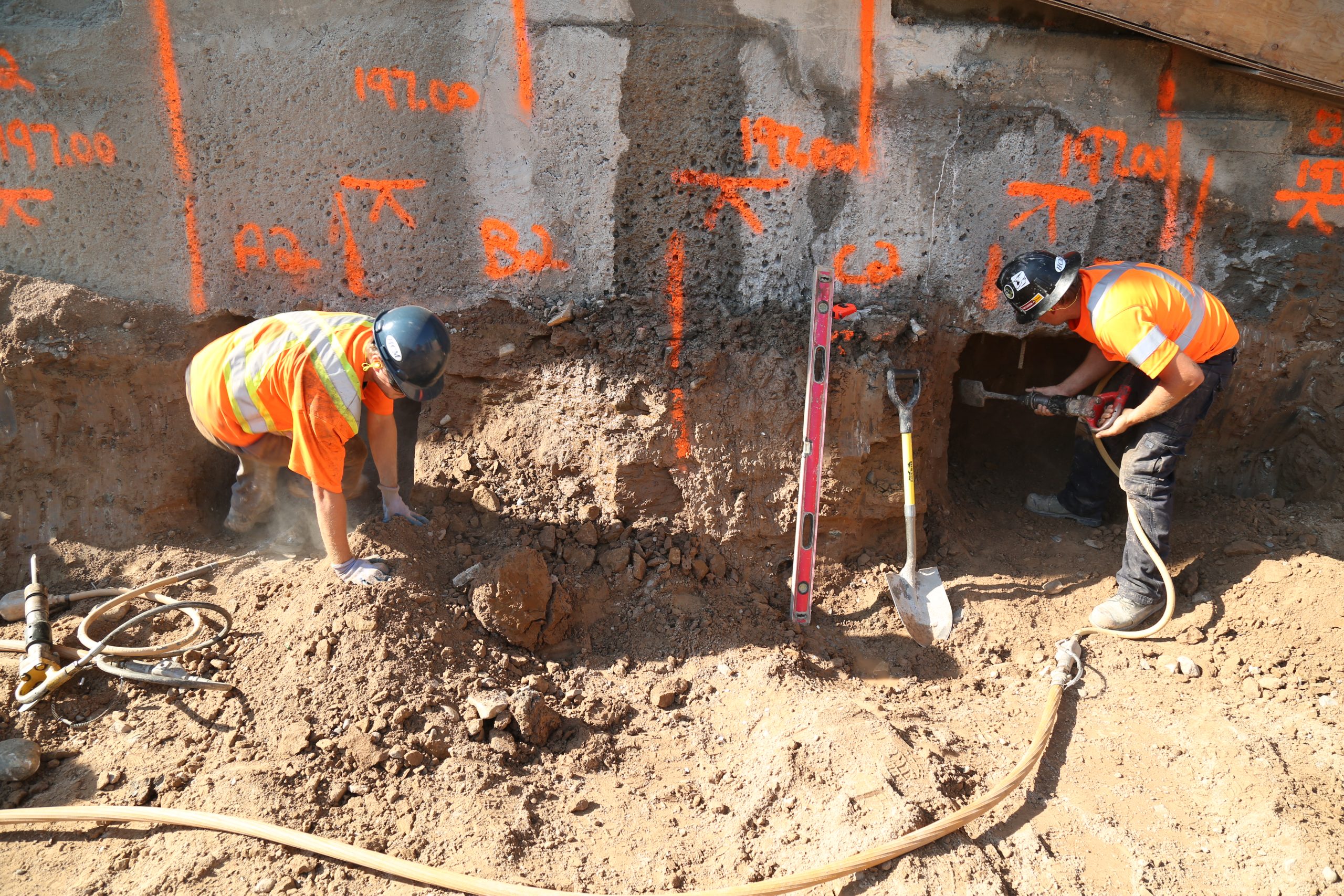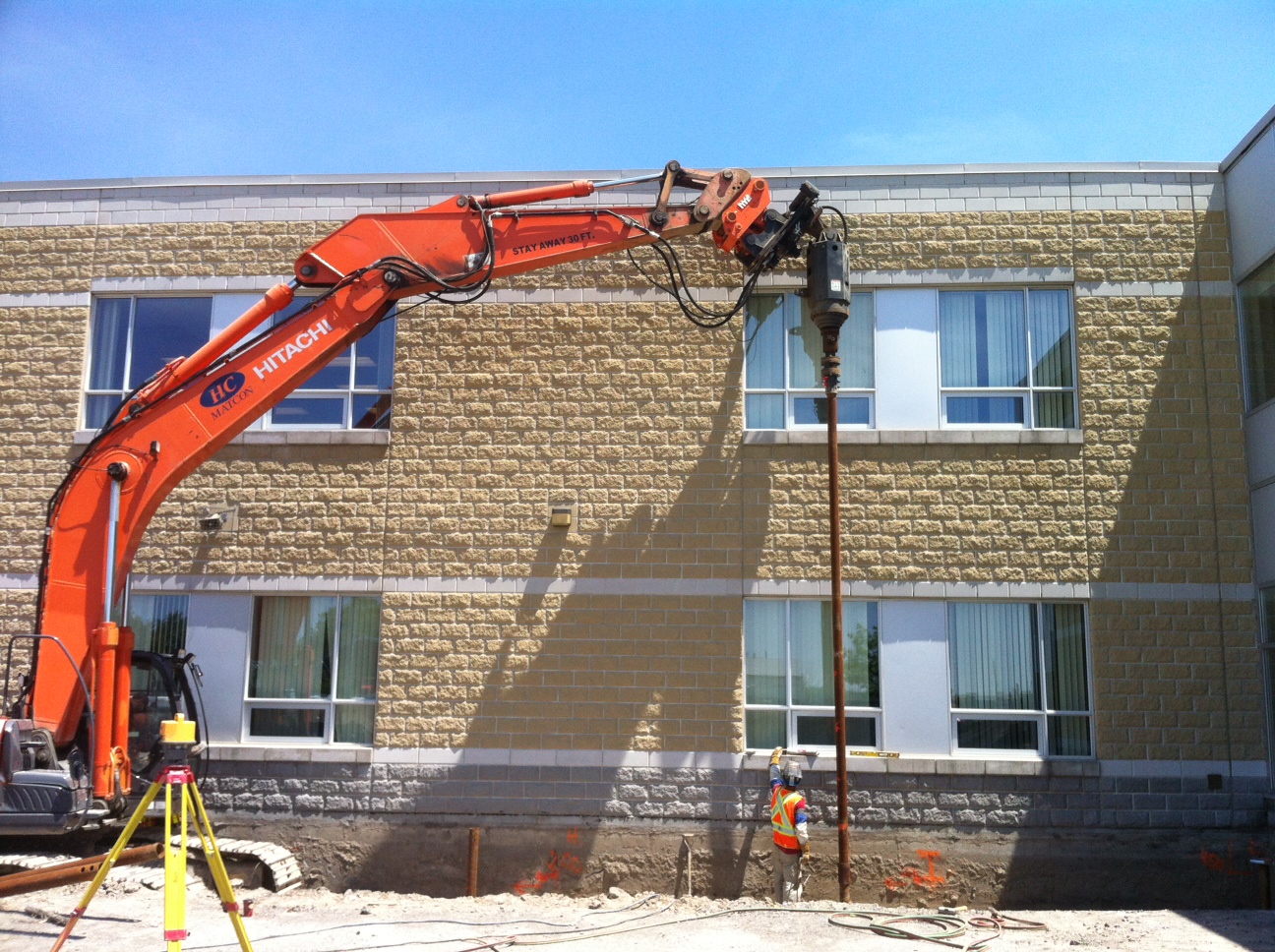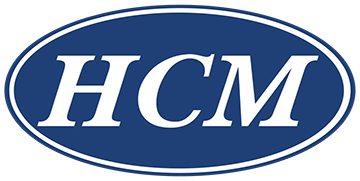Underpinning
Underpinning can provide increased heights of existing spaces, increase capacity of foundations for expanding the height of the building structure, or allowing the installation of elevator pits as an example.
Conventional Underpinning
The typical underpinning project involves a series of pins that are done in an ABC sequence (3 days),
The typical panel is installed to support the existing foundation and after the pin achieves its initial set the adjacent pins will be installed. This method allows the installation to be completed within the margin of safety that is factored into the initial design capacity of the existing foundations.


Adaptation of Unique Conditions with Tieback/Micropile Underpinning
In cases where neighbouring buildings are too close to allow for digging or the depth of the underpinning exceeds lateral stability allowance, mini/micro piles can be introduced to pick up the additional vertical loads and tiebacks to retain it laterally. These techniques require specialized engineering, equipment, and expertise to work in these usually unique workspaces.
Helical Underpinning Alternative
In cases where the conventional underpinning method cannot be used, HC Matcon is equipped to provide you with a helical alternative. This system is chosen through assessment of load requirements, soil, and structural conditions. Helical Underpinning systems can be installed to provide stability to foundations or increase load capacities of existing structures. Helicals are drilled into place independent of the existing structures to founding depths on suitable soil strata. We can extrapolate our helical load capacity by analyzing the achieved installation torque.
HC Matcon continues to be one of the leaders in the Foundation Industry for underpinning solutions.

